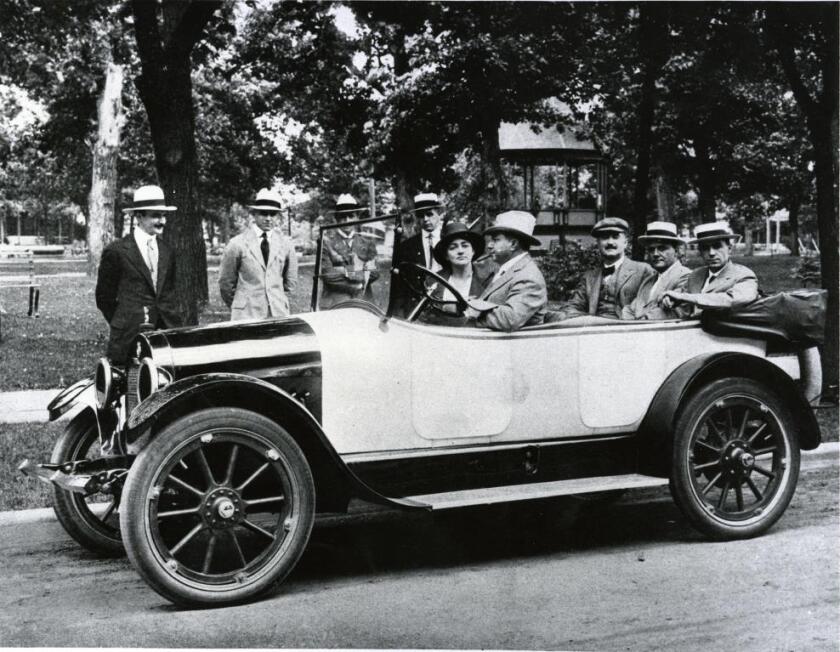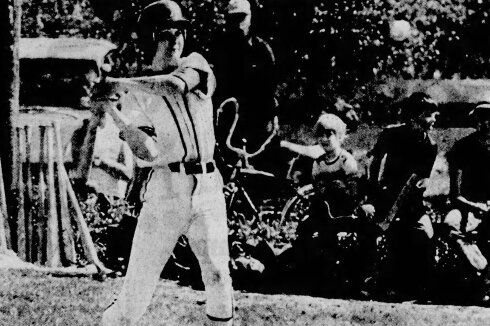FERGUS FALLS, Minn. — Not long after the Fergus Falls State Hospital opened in the summer of 1890, a local newspaper reporter took a tour of the place.
In an article titled "Among the Lunatics," he gave this account of his visit:
ADVERTISEMENT
I was greeted at the entrance by a patient, who with a lordly wave of his arm announced: "The state welcomes you, sir."
"The patients are found sitting around for the most part with an aimless air and appearance. Except for the lack of women, it would not be far-fetched to compare the scene to a hotel at some summer resort."
The story is one Chris Schuelke tells while giving tours of the Gothic-looking edifice that for decades dominated both the Fergus Falls skyline and the region's economy.
The hospital's long-vacant buildings and lonely, sprawling grounds appear at once imposing and more than a little spooky, even with a late-autumn sun still high in the sky.
The vibe is a valid one, said Schuelke, executive director of the Otter Tail County Historical Society. He tells visitors the hospital's past contains both light and shadow.
"They did good work here," he said. "But there are definitely dark instances at the state hospital." His tours, which recently ended for the seasons, lean heavily toward the latter.

He called the former state hospital "a castle of questions" and says the institution's mystique is something people find endlessly fascinating.
ADVERTISEMENT
Schuelke's stories are taken directly from newspaper accounts and oral histories.
"I'm not making stuff up," he said, referring to tales of murder, escaped patients, suicides, lobotomies and shock treatments.
The fact that disturbing things happened at the State Hospital shouldn't be surprising, given it once housed 2,000 patients watched over by 500 employees, he said.
"It was a tremendously large community," Schuelke said. "Of course you're going to have instances that aren't pleasant."
Not-so-clean sweep
One unpleasant instance involved a patient by the name of William McIntyre.
According to Schuelke's research:
McIntyre was polishing the floor when another patient got in his way. Angered, McIntyre swung the polisher at the man.
But McIntyre missed his intended target, striking instead a man named William Cosgrove, who was sitting in a nearby chair.
ADVERTISEMENT
The blow crushed Cosgrove's vertebra, killing him.
And in another cleaning-related incident:
A hospital attendant was washing a fourth-floor window when a patient was seized by a sudden desire to go through it.
The attendant tried to stop him, but the patient succeeded in making the leap.
The nurse was almost pulled through the window trying to stop him.
One of the escape stories Schuelke shares tells of one William Morahn, a patient who slipped away from the hospital in September 1920.

Weeks later, Morahn arrived at his family's farm where he hid four sticks of dynamite in the chicken coop.
ADVERTISEMENT
Hiding nearby, he lit a fuse when his father went out to gather eggs.
In the ensuing explosion Morahn's father, the chicken coop and the chickens were all blown to pieces.
It is not known whether the younger Morahn was ever captured.
A number of the stories involve questionable commitments to the State Hospital that were later reversed, including situations where spouses had partners put away and at least one case in which politics appeared to have played a role.
The year was 1893, and Frank Hoskins, a newspaper editor from Henning, was locked away for being overly critical of the banks in Fergus Falls.
A populist who used terms like "usurious plunderers" when describing financial institutions, Hoskins may have sealed his own fate when he urged people to withdraw their money from banks.
"A little probate court was put together and they put him in the State Hospital," Schuelke said.
ADVERTISEMENT
Hoskins was freed after the state Supreme Court ruled his right to due process had been violated.
Describing his stay in the State Hospital, Hoskins said he was placed in a ward where patients were yelling, jumping and making noise night and day.

Self-contained
Curious happenings aside, for its time the Fergus Falls State Hospital was among the best in the country at treating people with mental illness, said Schuelke, who added the campus was largely self-contained, with its own farm, orchard, power plant and bakery.
"One thing I find fascinating is the enormity ... they grew all of their own food," Schuelke said, citing a report from the 1950s that found roughly 8% of the population of Fergus Falls had some type of employment connection to the hospital.
The percentage was even greater for some of the surrounding towns, Schuelke said.
A character that figures prominently in the hospital's history is Dr. William Patterson, a graduate of the Boston University School of Medicine who in 1912 became hospital superintendent, a job he held until retiring in 1968.
ADVERTISEMENT

Known as a strong and compassionate leader, Patterson was said to have been on a first-name basis with every patient.
That familiarity could come in handy, like the time Patterson was taking his morning walk around the grounds when he espied a patient on the hospital roof wearing only his birthday suit.
Schuelke's tour notes describe the encounter this way:
The patient was apparently greeting the rising sun.
In typically direct fashion, Dr. Patterson looked up at the naked man and said:
"Bob, what are you doing up there? Are you crazy? Get down from that roof now!"
Schuelke said this story had a happy ending: The man sheepishly made his way down from the roof.























